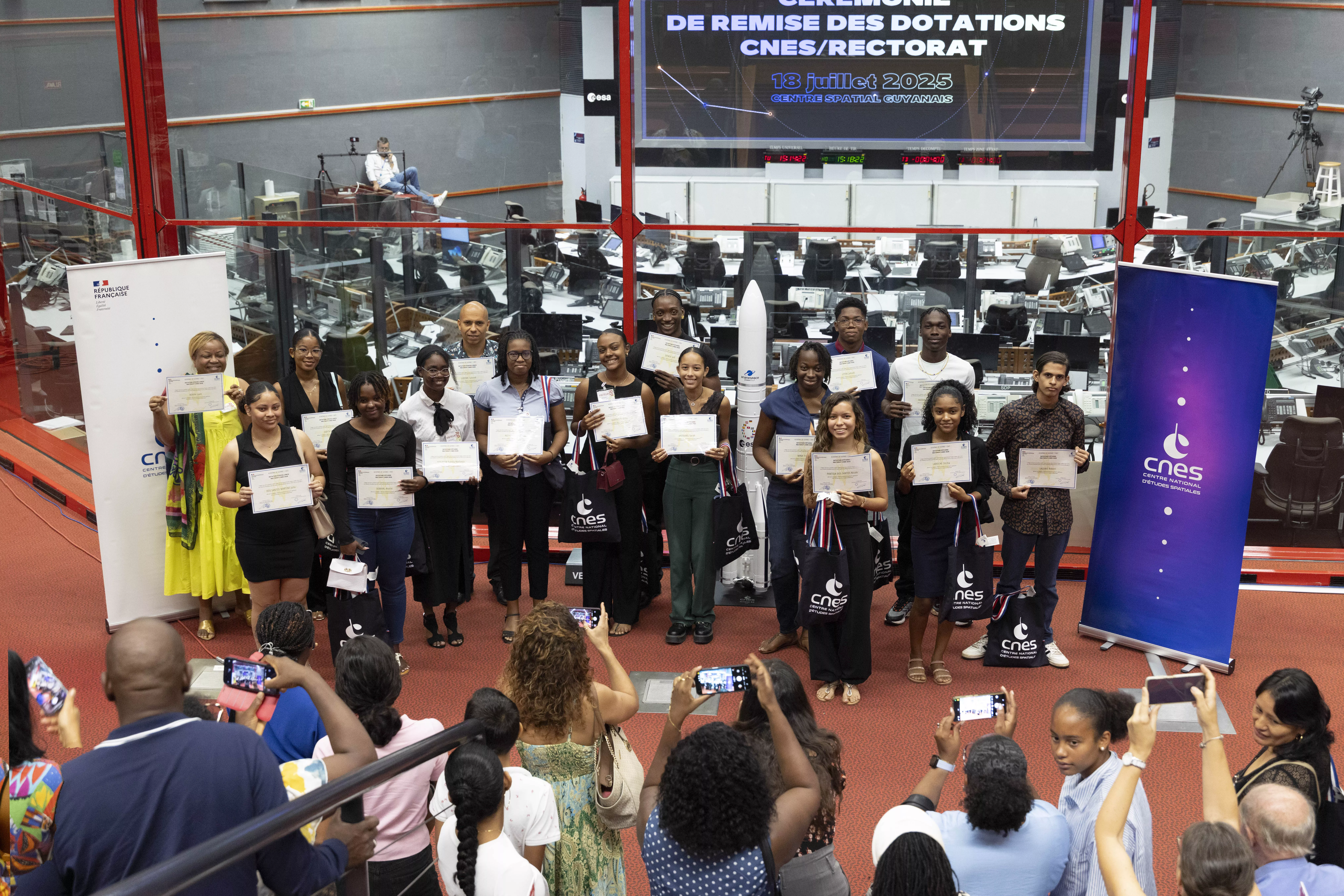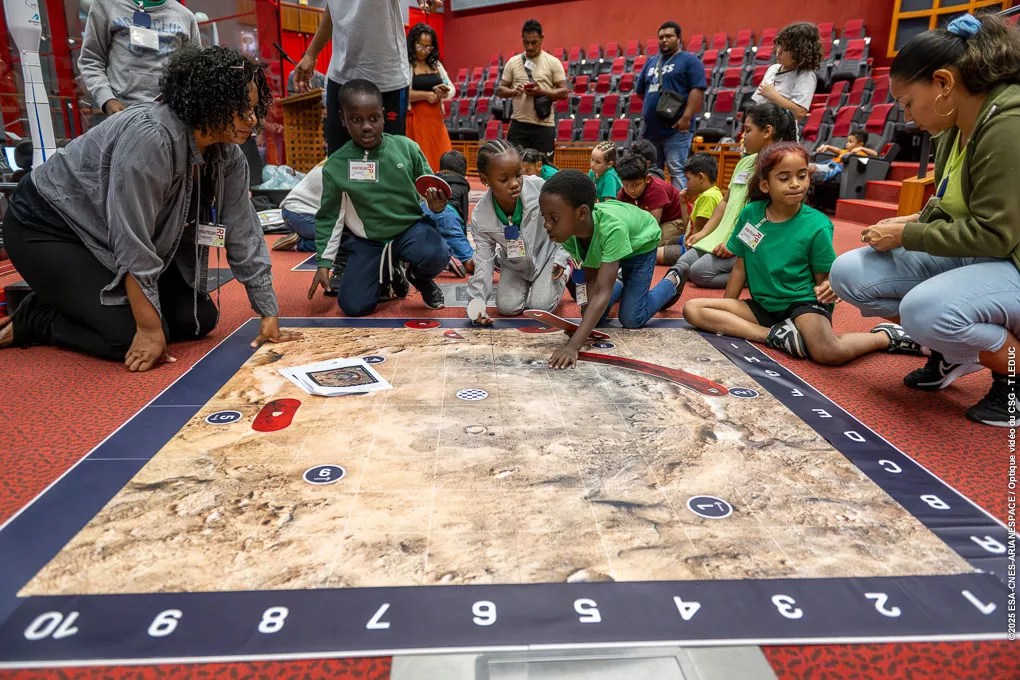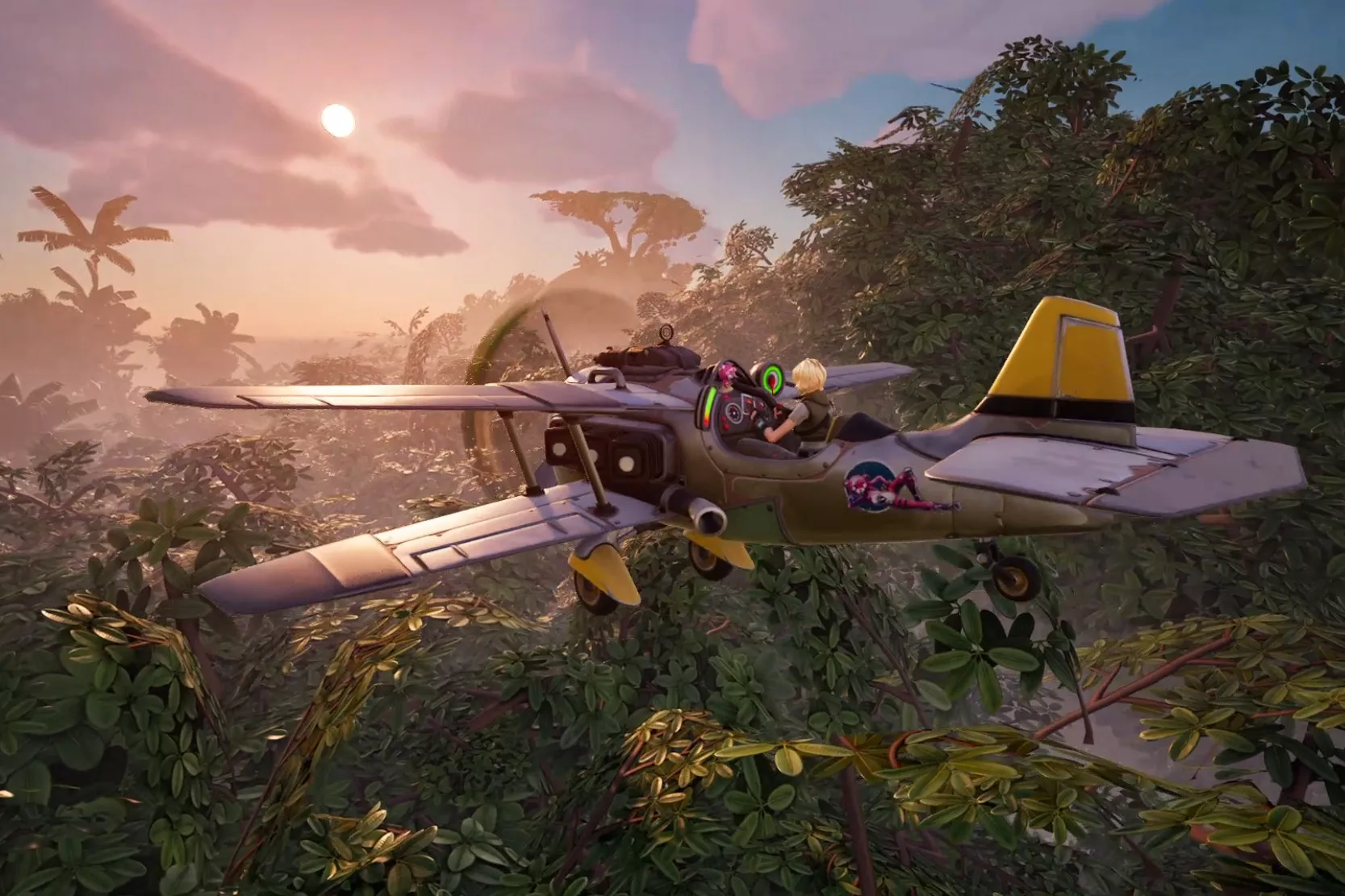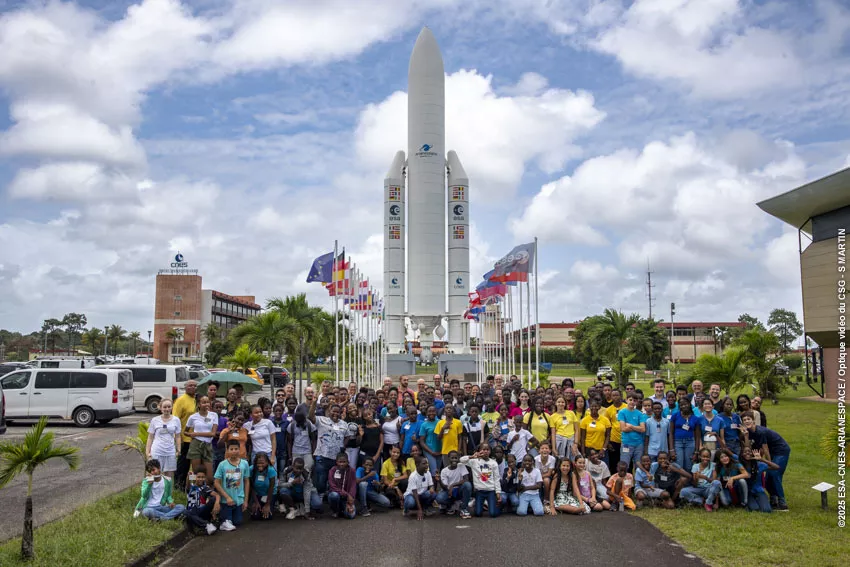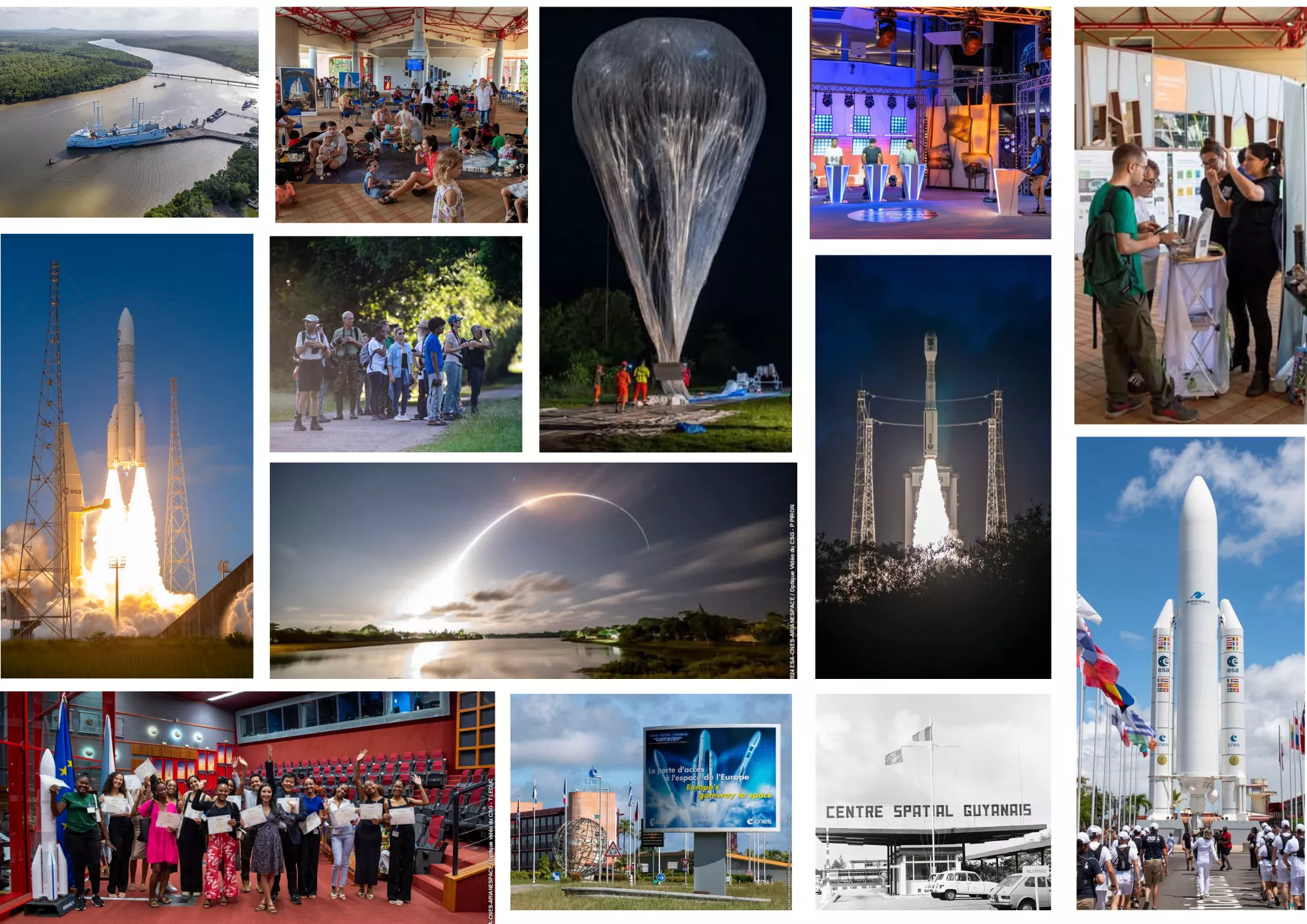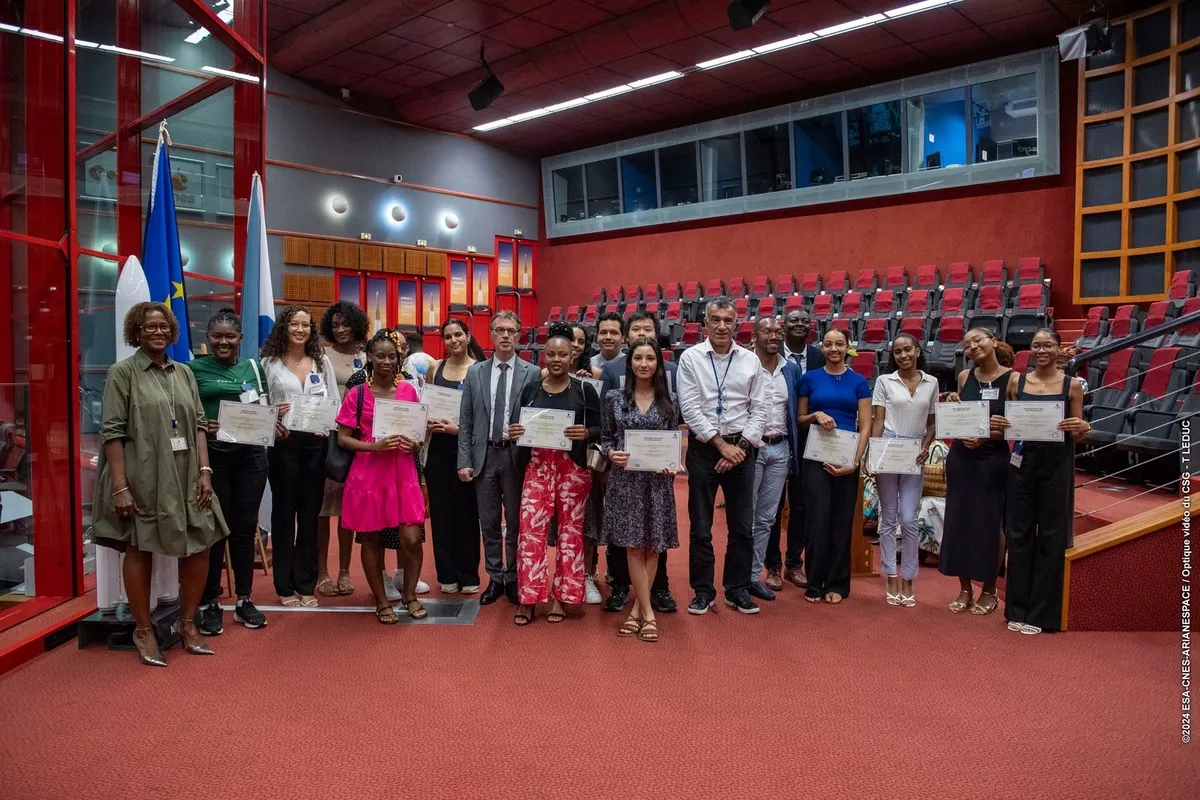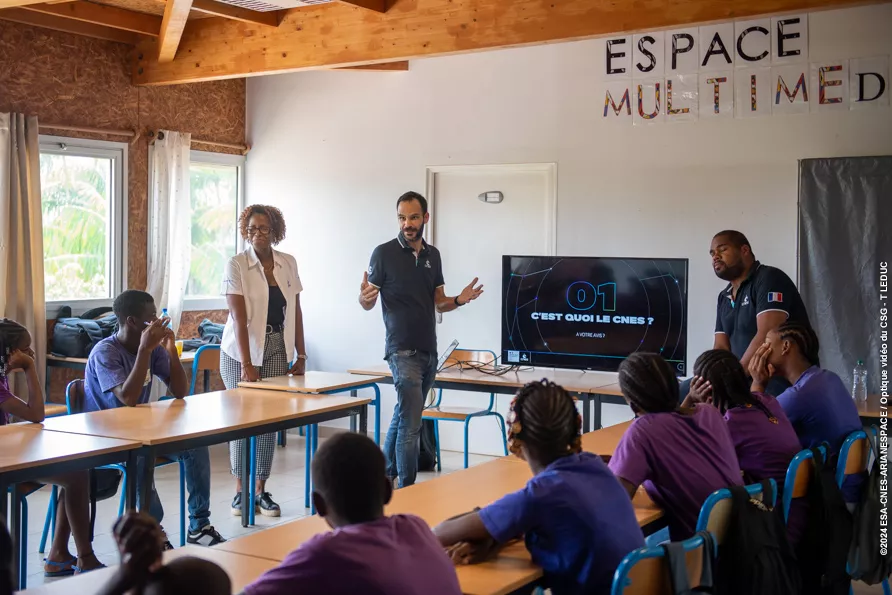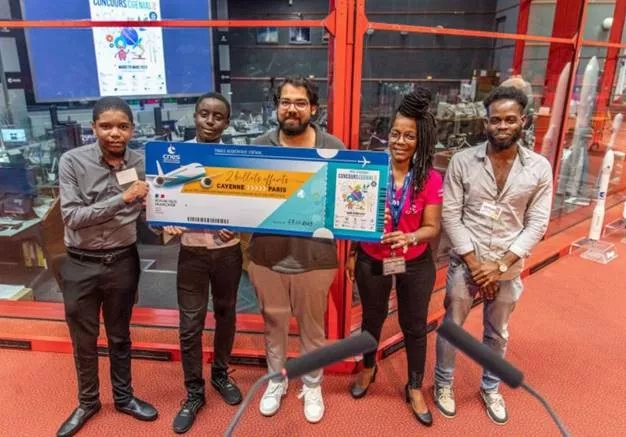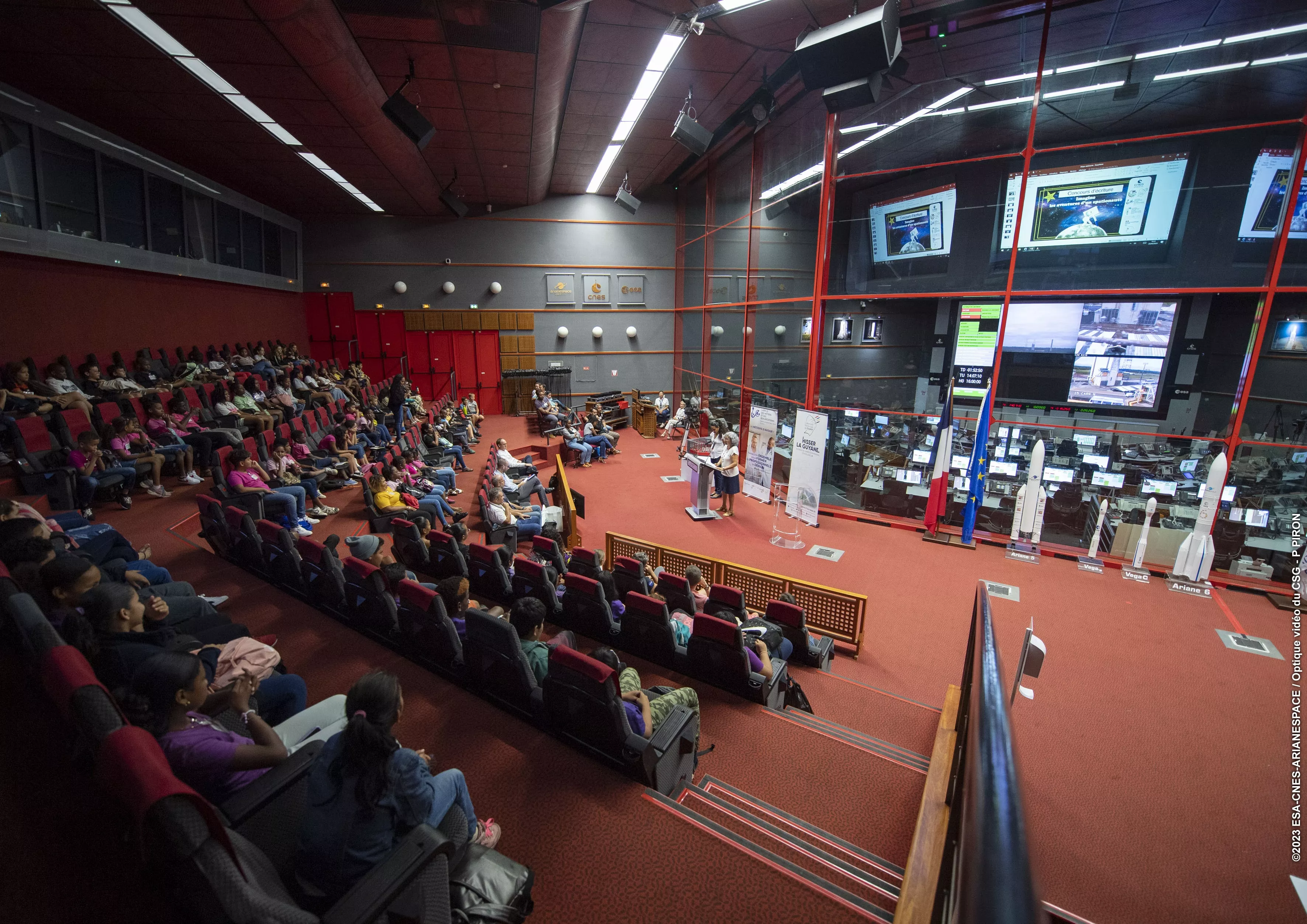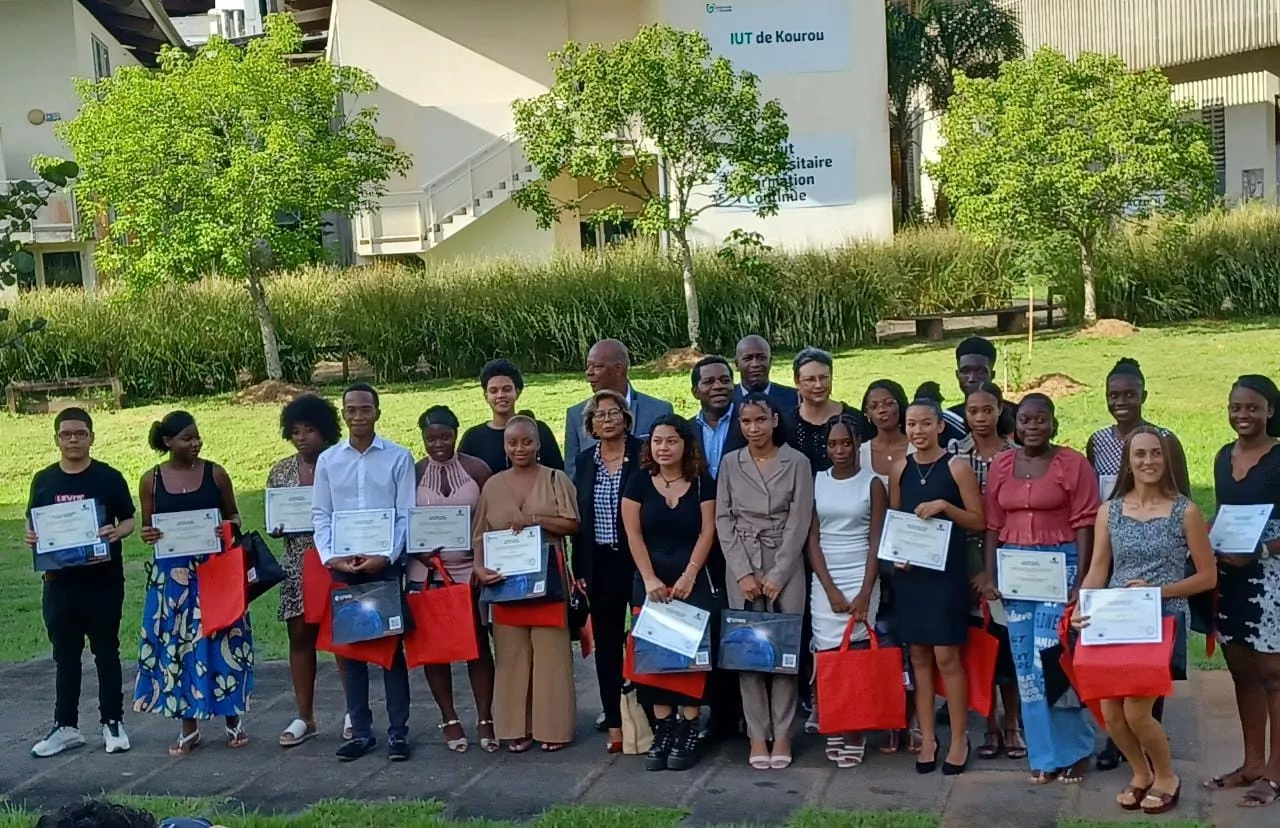Revolutionising education with “Guyane connectée - Combler les écarts”
The aim of “Guyane Connectée - Combler les écarts” (Connecting Guiana - closing the divide) is to provide high-quality education to pupils in their first and second year of secondary school who live in isolated villages in French Guiana. This educational project is due to start in September 2023 with a trial phase in Maripasoula, in the Upper Maroni region. Let’s take a look back at a highly ambitious initiative, supported by the French Guiana Local Education Authority with backing from the French Space Agency’s Space Structural Unit for French Guiana.
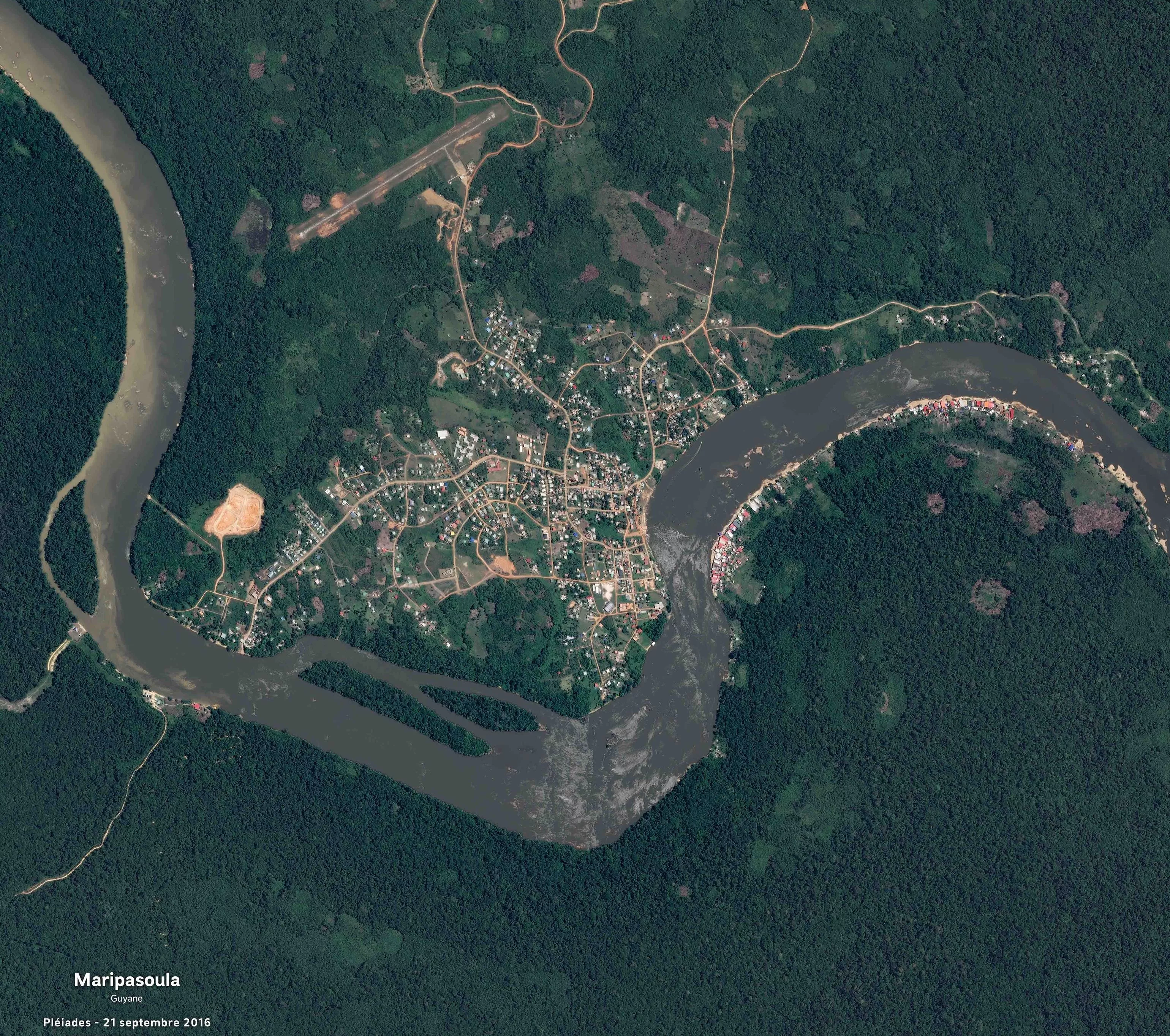
CNES 2016, distribution Airbus DS
The issues
For children in French Guiana who live in isolated areas of the region, the transition from primary to secondary school always means breaking with their family and cultural environment.
The secondary school is so far away from where they live that they cannot travel there every day and have to be accommodated at a boarding school. There is of course the option of home-based learning via the CNED distance learning service, but that has one major disadvantage: pupils do not benefit from the social aspect of schooling.
The trial project
The aim is to offer an alternative solution based on simultaneous distance learning using satellite telecommunications technology.
Online year 7 classes will be set up for children living in Maripasoula and its outlying villages in the Upper Maroni region. Those pupils will be able to attend live classes given by teachers of the Maripasoula secondary school class to which they are assigned. The transmit-receive satellite link will also allow them to ask the teachers questions and talk to fellow pupils in the classroom.
Staff who speak the native language of the community will be trained to welcome them and provide teaching support in the classroom, as well as managing pupils during school time, plus supervising and monitoring homework.
Because some classes cannot be taught remotely, a travelling teacher with versatile teaching skills will come to their village. To complete the scheme, regular get-togethers will be organised so that children from the same class (there will be around fifty of them, with only ten or so attending the school in person) can get to know each other better and progress together.
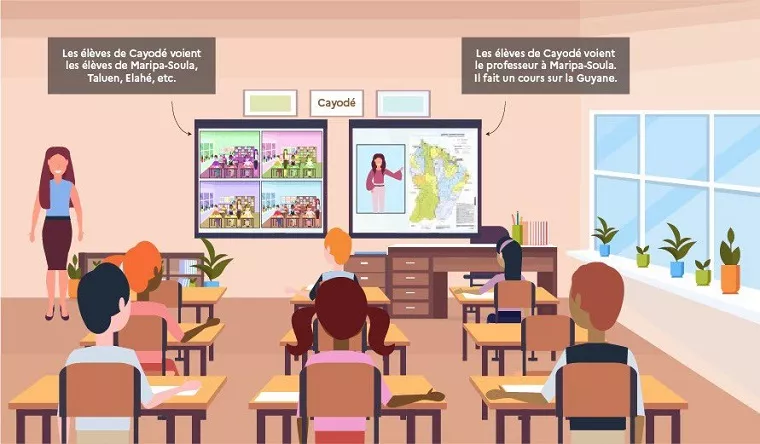
Illustration of a connected class in an isolated village
www.ac-guyane.fr - académie de Guyane
The project stakeholders
The French Guiana Local Education Authority is in charge of the project and oversees the teaching aspects. The Local Authorities in French Guiana (CTG) and the Regional Council provide logistical and financial support. The CNES, together with the Société Publique Locale d’Aménagement Numérique de la Guyane and EDF (the electric utility company), provide support and expertise for technical and energy-related aspects (the CNES also shares its experience in managing large-scale projects).
The intensive use of digital technology both in and out of the classroom also requires the support of a dedicated instructional design unit, which will assist students as well as teaching and support staff.
All these stakeholders will work closely with the villages, parents and village chiefs concerned. The project will also benefit from the academic expertise of the Migrations, Interculturality and Education in the Amazon laboratory at the University of French Guiana.
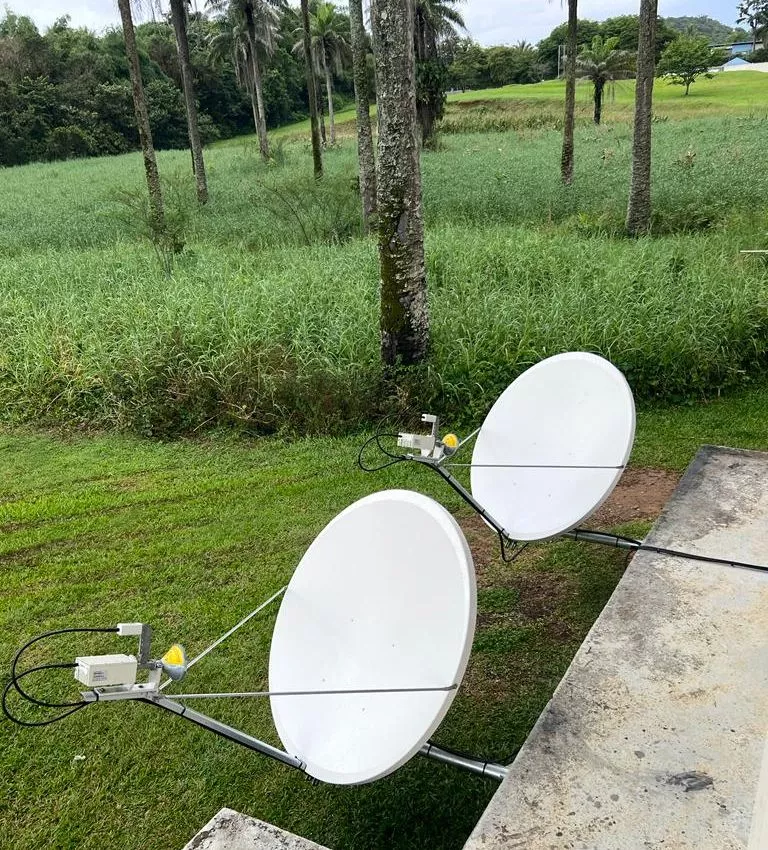
The satellite network and its antennas, an essential part of the system
The challenges ahead
Four challenges lie ahead.
First, a technical challenge, with the introduction of a completely new audio and video telecommunications system. Custom software will be developed and a bandwidth on the satellite link will be set aside for this use.
Next comes a teaching challenge, because experimentation goes hand in hand with a revolutionary way of teaching. This means recruiting and training both teachers and support staff.
The third challenge is logistical, as classrooms have to be set up and equipped in isolated villages. This will involve—among other operations—transporting equipment by... dugout canoe, and installing solar panels to provide green energy.
Finally, there is the human challenge of forging closer ties between the pupils and teachers. For example, an induction week is planned for everyone at the beginning of September.
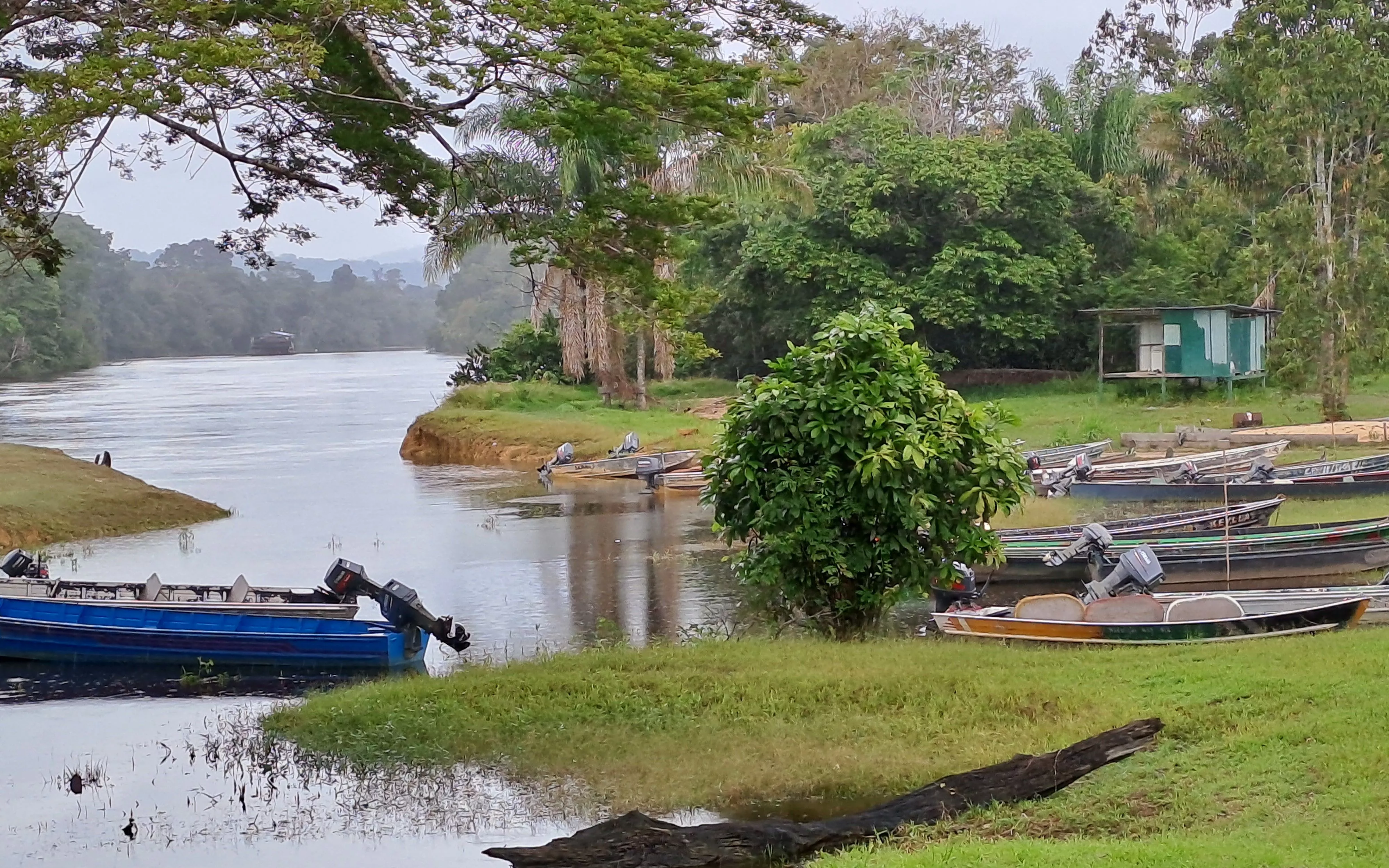
The banks of the Upper Maroni
The different project phases
During the trial phase, the new teaching solution will be assessed using a full set of indicators, under the guidance of the Instituts Nationaux Supérieurs du Professorat et de l’Education (teaching training institutes) in Aix-Marseille and in French Guiana. That assessment will make it possible to confirm the validity of the solution and make any necessary adjustments to optimise it.
The project stakeholders will then be able to move on to the next phases: extending the scheme to year 8 classes and expanding it geographically to other regions in French Guiana.
In the same section
-
French space agency grants: 24 new beneficiaries for the Class of 2025
30/07/2025Education: Bringing Space Closer to Students
10/07/2025Europe’s Spaceport shines in the French Space Agency Fortnite map
27/05/2025Regional finals of the C’Génial competition
28/03/2025The French Space Agency’s commitments in French Guiana : review and outlook
29/01/2025CNES 2024 grant awards ceremony
19/07/2024Education: news from the first half of 2024
